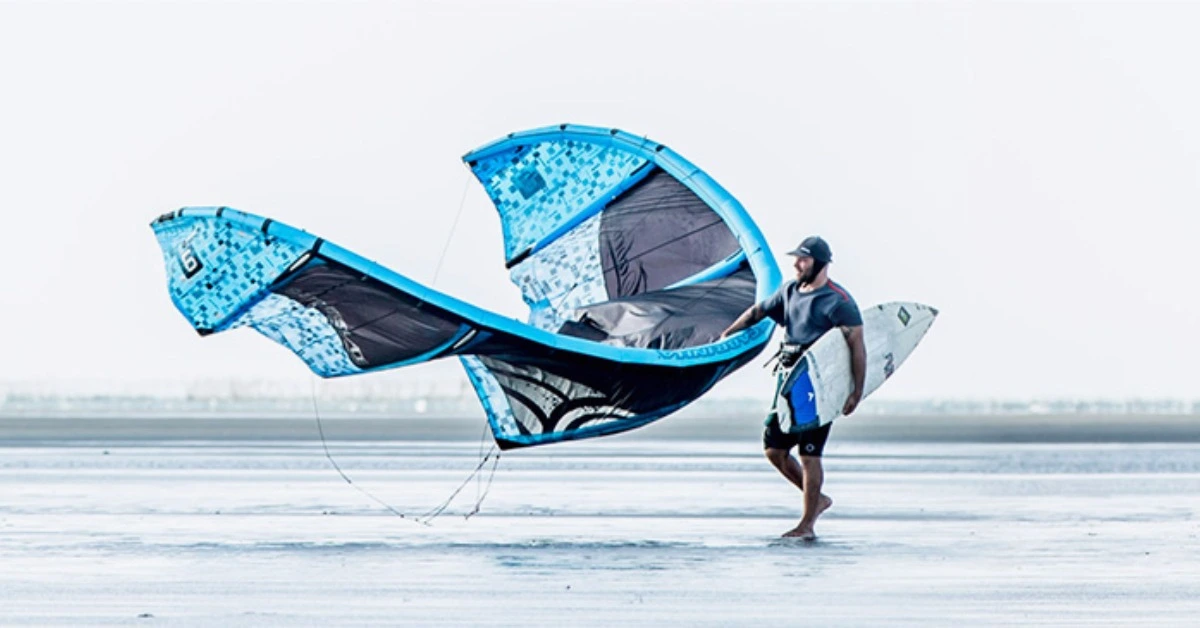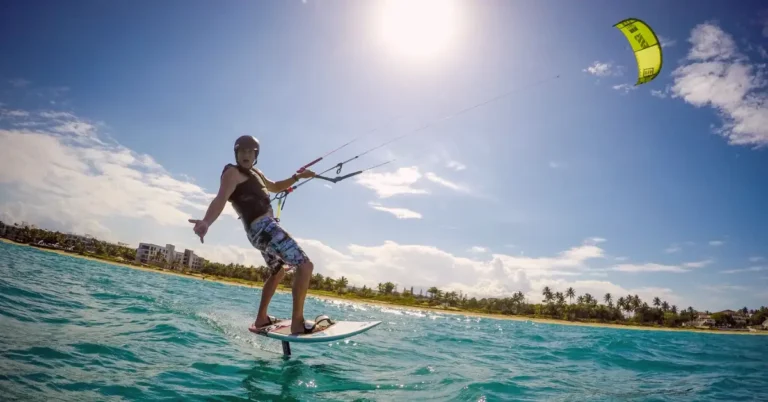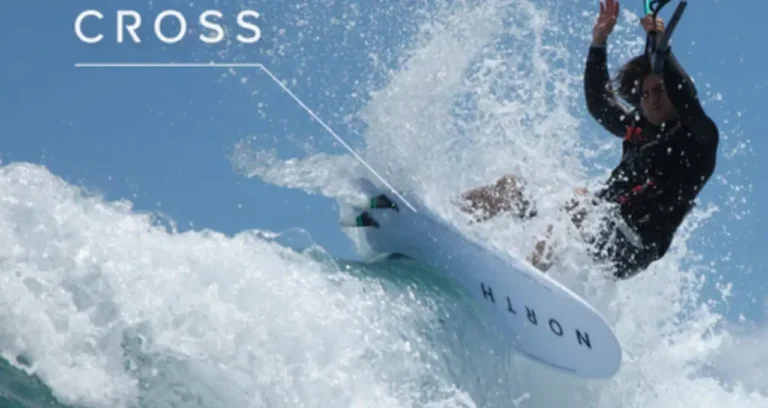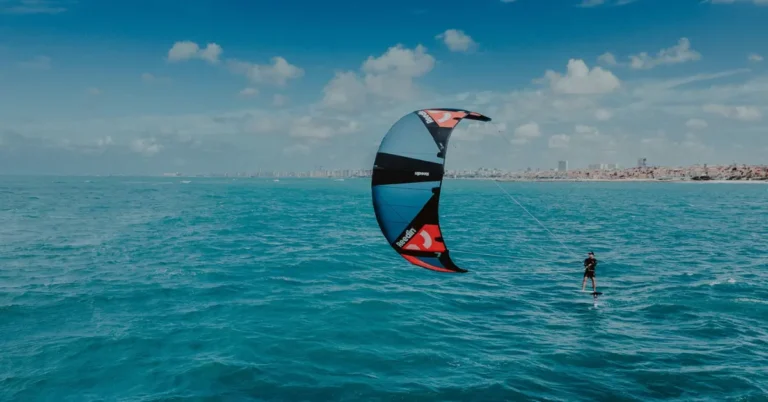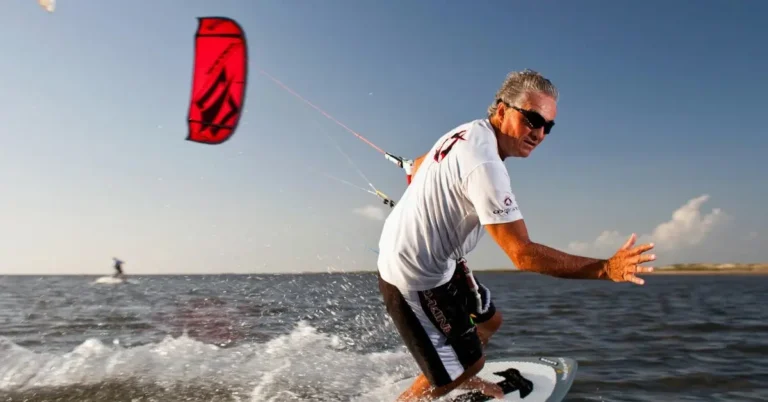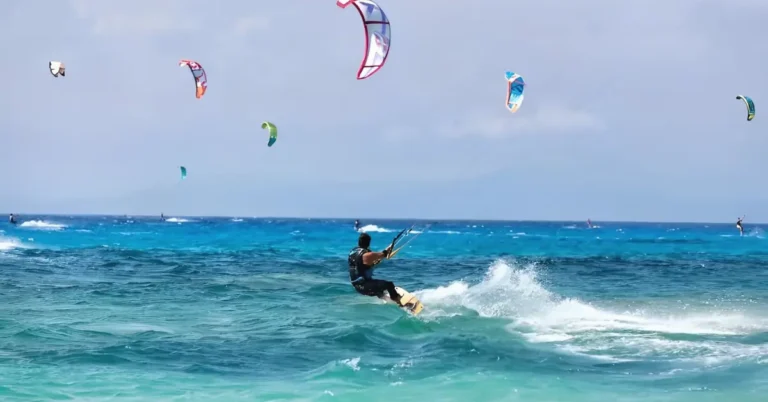What is the Difference Between Kitesurfing and Kiteboarding?
In the UK, kitesurfing is commonly defined as riding through the water with a kite and board, emphasizing the similarity to surfing, which occurs in the water. However, in countries like the USA, South Africa, and Australia, the sport is referred to as kiteboarding, focusing on the board used rather than the act of surfing.
This difference in terminology likely stems from variations in the governing bodies of the sport. While distinctions between kitesurfing and kiteboarding may seem blurry, they highlight the diverse sub-disciplines within the sport, such as freestyle, racing, and significant air events like Red Bull King of the Air and Red Bull Megaloop.
Also Read: What to Wear For Kitesurfing
What is kitesurfing?
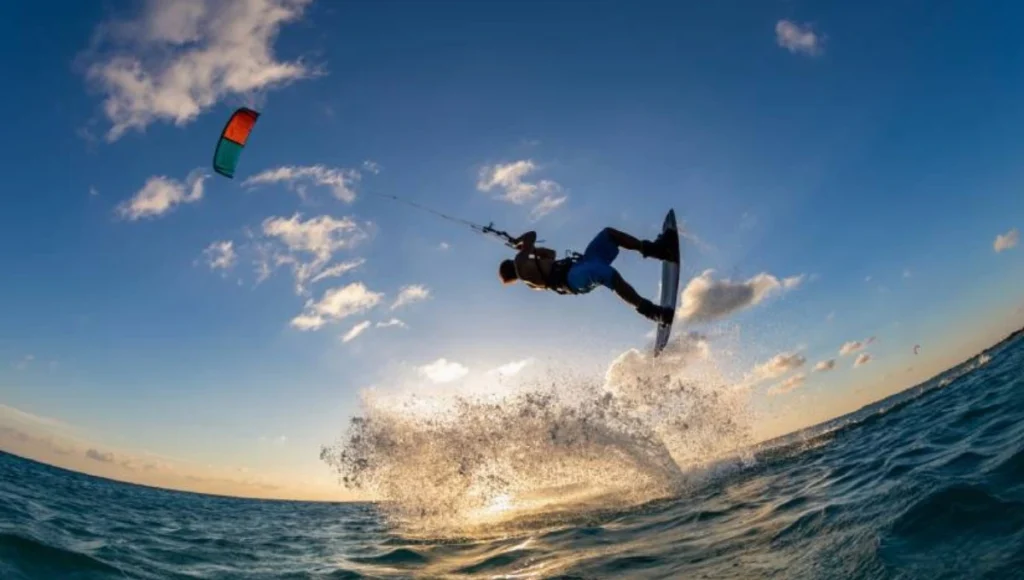
Kitesurfing is a thrilling watersport powered by the wind, where a kite and a board propel you across the water. It emerged from the culture of windsurfing and surfing. In simpler terms, kitesurfers use boards similar to surfboards, with a front and back end, to ride the waves.
Some experts, like Airton Cozzolino, specialize in wave-riding, but kitesurfing isn’t limited to just that. You can enjoy it in various settings, from calm lagoons to choppy seas or big waves. All you need is wind and water to experience the excitement of kitesurfing.
What is kiteboarding?
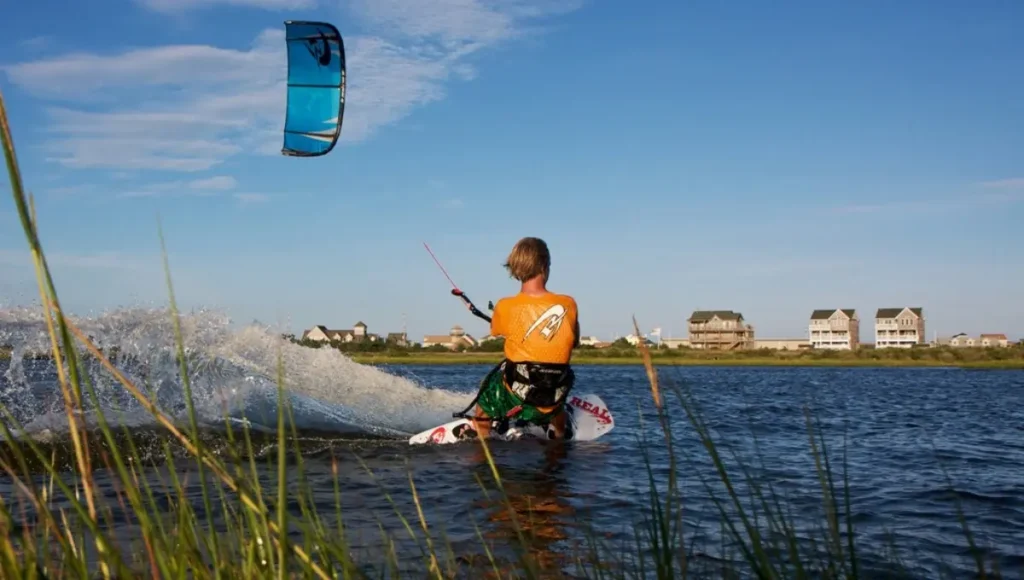
Kiteboarders use twin-tip boards, which are similar to wakeboards and snowboards. Riding these boards is often considered more accessible compared to directional boards, but it’s still challenging.
Directional boards, influenced by tricks from snowboarding and wakeboarding, have led to exciting innovations in jumping and performing tricks, including rolls and flips.
How do I get started?
One of the most remarkable aspects of kitesurfing and kiteboarding is that, like the top athletes who compete in events like Red Bull King of the Air, you can dive deep into the sport. You can be a kiteboarder and a kitesurfer, with a collection of different boards and kites filling up your room.
However, taking a few lessons from a skilled coach is crucial before you jump in. These lessons are essential to help you start right. A good instructor will not only teach you how to ride the waves quickly but also educate you about wind and water conditions. They’ll also provide vital safety tips and procedures. Without this knowledge, you could pose a risk to yourself and others on the water and beach.
What does Kiteboarding refer to in the UK?
In the UK, Kiteboarding typically refers to riding through water with a kite and board, similar to kitesurfing. Kiteboarding, often seen as the dry version of kitesurfing, has been around for quite some time, possibly even longer than kitesurfing itself.
Instead of using a kitesurfing board, kiteboarders ride on skateboards with large wheels, allowing them to zip across the beach.
Choosing the Right Spot for Kiteboarding
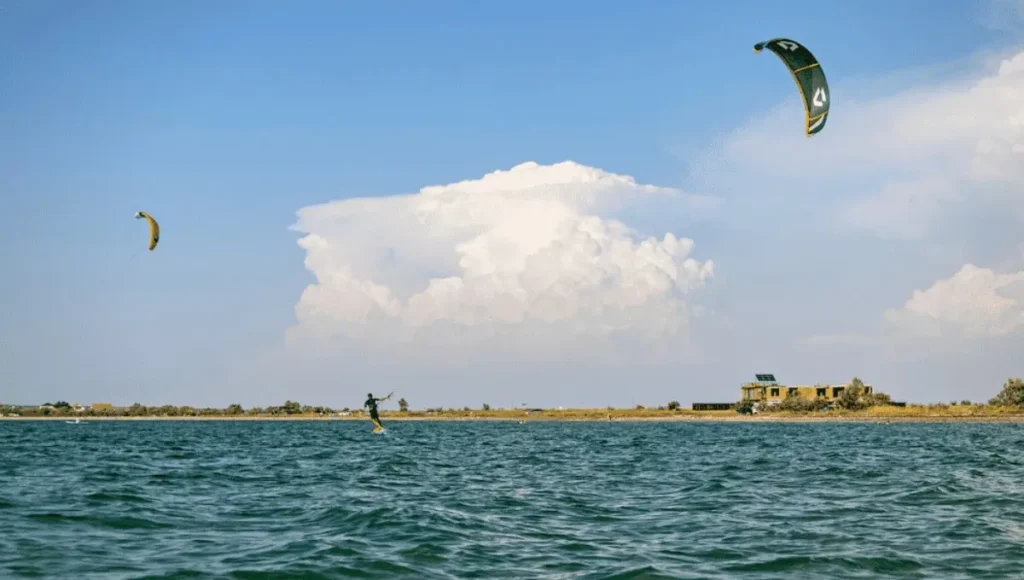
The main difference in a kiteboarder’s setup is the type of kite they use. They typically opt for foil or ram kites. These kites are better at pulling the rider to either side, as it takes work for kiteboarders to redirect a downward pull. Foil kites, especially, are great for flying on the edge of the wind window due to their design and lighter weight, making them less likely to fall to the ground than LEI kitesurfing kites.
Unlike kitesurfers, kiteboarders don’t need LEI kites as they’re not in the water. If they crash a foil kite on the beach, it’s easier to relaunch without damaging the waves. When choosing a spot, kiteboarders prefer long and deep sandy coastlines. These areas provide ample space for everyone to enjoy, including beach users and birds.
Which one is safer, surfing and kitesurfing or kiteboarding?
Both surfing/kitesurfing and kiteboarding can have risks, but on average, kiteboarding is considered slightly more dangerous due to additional factors:
- Kiteboarding uses giant-powered kites that require training to control correctly. Losing control of the kite poses risks of injury from the kite or its lines.
- Kites can lift a rider out of the water to heights of tens or hundreds of feet, whereas surfing/kitesurfing keeps one closer to the surface. Falls from greater heights with a kite pose more significant risks.
- Kite control relies more heavily on timing, coordination, and judgment than wave surfing. Mistakes in handling powerful kite lines and canopy pose injury hazards.
- Kiteboarding in specific locations like lakes/inland areas needs more cushioning impact of water surf landings. Falls onto land/ice/rock can lead to more severe injuries.
Kiteboarding: What does it feel like to kitesurf?
Here’s what kiteboarders describe the sensation of kitesurfing feels like:
- Freeing/Euphoric – Harnessing the power of the wind to glide across the water makes you feel unconstrained in a way that few other sports do. It’s an adrenaline rush.
- The sensation of flight – With a large kite towing you above the waves, it feels like you’re almost flying over the water. You get aerial and weightless when the kite lifts you on the power strokes.
- Full body workout – From balancing to edges to jumps to tackling waves, every part of your body gets a dynamic cardio/strength endurance challenge.
- Zen-like flow state – Once dialed in, the ride can become a state of effortless flow and mindfulness, with waves/wind as your partner in an almost meditative dance.
- Adrenaline sport – Launching off waves, pulling big air, or overcoming challenging conditions pumps adrenaline. Accomplishments feel hugely rewarding.
Frequently Asked Questions
Conclusion
While kitesurfing and kiteboarding involve riding with a kite and board, they encompass distinct styles and equipment preferences. Kitesurfing typically emphasizes wave riding with directional boards, while kiteboarding contains various styles, including flat water riding with twin-tip boards.
Kitesurfers often use LEI kites, while kiteboarders may opt for foil or ram kites. Additionally, kiteboarders prefer long sandy coastlines with exposed sandbanks for riding. Despite their differences, both sports require proper training, safety awareness, and adherence to safety guidelines to ensure a rewarding and safe experience on the water.
